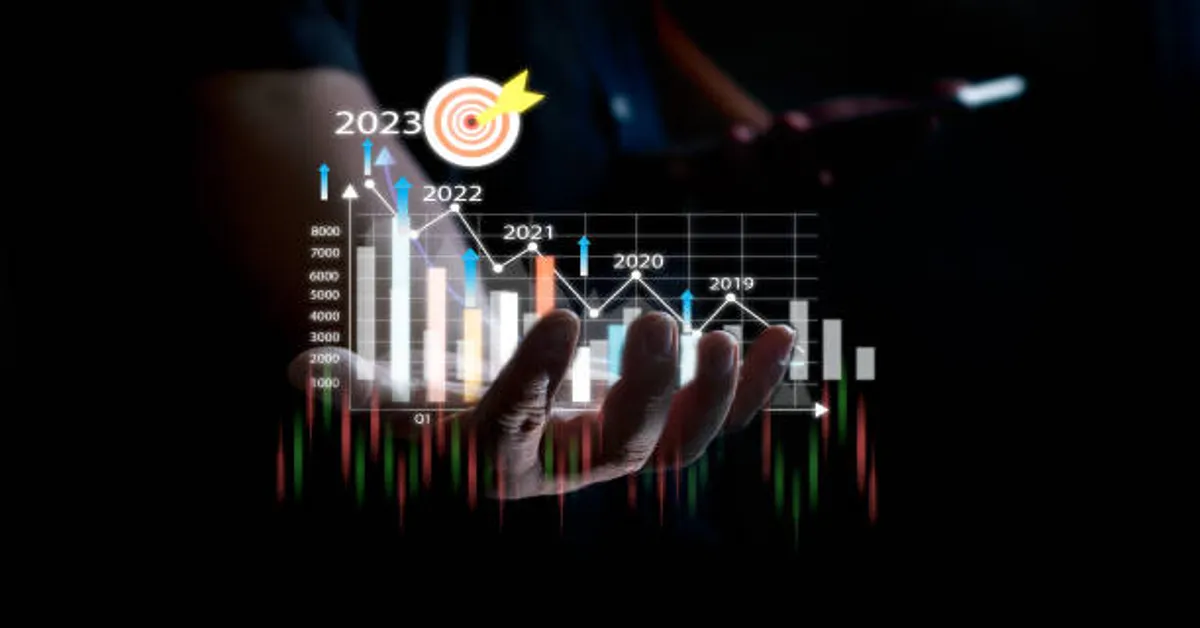Indian Railway Finance Corporation (IRFC) is a critical financing arm of Indian Railways, responsible for sourcing capital for rolling stock and infrastructure upgrades. With the nation pursuing ambitious railway modernization, IRFC Share Price Target 2030 finds itself at the heart of India’s infrastructural evolution. This detailed article explores IRFC’s path toward 2030, assessing its current position, expected drivers, valuation projections, risks, and strategic choices for investors.
1. Understanding IRFC’s Role and Business Model
Formed in late 1986 and listed publicly in January 2021, IRFC Share Price Target 2030 functions by raising funds—via bonds, loans, and capital markets—to finance railway assets such as locomotives, coaches, wagons, and stations . As a public sector undertaking, majority-owned by the Government of India (86.36%) with “Navaratna” status, it enjoys sovereign backing . Its close alignment with Indian Railways places it in a monopoly-like position for financing railway capital expenditures—forecasted in the range of ₹3 lakh crore in upcoming years .
2. Recent Share Price and Near-Term Outlook
By July 2025, IRFC Share Price Target 2030’s share was trading around ₹139–140 after a significant correction from its June 2024 high of ₹229—a roughly 46% decline . However, expert analysts suggest that government commitment to railway projects (e.g., ₹18,658 crore allocation) can reignite long-term interest, with potential rise to ₹160–₹165 within a year if sustained above ₹140 .
3. Analyst Forecasts Leading to 2030
Multiple scenarios project IRFC Share Price Target 2030’s share price trajectory into 2030:
A. Moderate Growth Forecasts
- SharePrice-Target.com estimates between ₹509 and ₹592 by 2030 .
- SharesPrediction.com suggests a range of ₹925 to ₹1,060 .
B. Bull Market Estimates
- Medium.com forecasts a substantial upside of ₹1,150–₹1,400 by 2030 .
- LinkedIn estimate places the 2030 range at ₹615–₹672 .
C. Community-Based Projection
- Reddit user “capitaladda” projects IRFC at ₹823 by 2030 .
These disparities stem from varying assumptions about capital infusion, interest rates, debt levels, and policy consistency.
4. Key Drivers Behind the Forecasts (2025–2030)
4.1 Massive Capex Pipeline
Indian Railways aims for a multiyear capital deployment plan involving locomotives, rolling stock, stations, and freight corridors—fueling IRFC’s core business .
4.2 Government Backing and Strategic Status
Holding Navaratna status and majority government ownership gives IRFC Share Price Target 2030 policy assurance and operational stability .
4.3 Dominance in Railway Financing
As a unique entity financing railway assets, IRFC Share Price Target 2030 benefits from steady demand and low competition .
4.4 Interest Rate and Bond Market Trends
IRFC borrows through bonds; thus, any shift in government bond yields, inflation, or RBI policy could affect its cost of capital and margins.
4.5 Regulatory and Policy Environment
Supportive infrastructure investment policies, subsidies, and deregulation would support IRFC, while changes or private-sector entry could impact future growth.
5. Balancing Opportunities With Risks
A. Economic Slowdowns & Capex Delays
If the economy slows or railway projects face delays, IRFC’s loan book expansion could stall.
B. Rising Rate Environment
An increase in borrowing costs without parallel rate hikes for assets could compress margins.
C. Competing Financing Alternatives
Emerging private financing vehicles might challenge IRFC’s dominance over the medium to long term.
D. Policy & Execution Risk
Failures in infrastructure execution or budget reallocations could limit IRFC’s financing role.
E. Market and Liquidity Concerns
As a PSU, its equity performance still depends on investor sentiment, broader market trends, and debt financing liquidity.
6. Numerical Forecast Summary for 2030
| Source | Low (₹) | High (₹) |
|---|---|---|
| SharePrice-Target.com | 509 | 592 |
| SharesPrediction.com | 925 | 1,060 |
| Medium.com (Technical) | 1,149 | 1,402 |
| LinkedIn estimate | 615 | 672 |
| Reddit (“capitaladda”) | – | 823 |
Most moderate forecasts center on ₹600–₹1,000; bullish estimates push it above ₹1,000. Conservative estimates cluster near ₹600.
7. Composite Forecast Interpretation
A balanced view anticipates IRFC reaching ₹800–₹1,000 by 2030, barring major economic or policy setbacks. The underlying thesis hinges on uninterrupted railway capex and favorable funding conditions. However, structural financing changes or rate pressures could compress returns.
8. Crafting an Investor Strategy
8.1 Long-Term Lens
For investors with a 5–10 year horizon believing in infrastructure expansion and responsible fiscal management, IRFC could be a stable core holding.
8.2 Valuation Watch
Buy zone could be ₹120–₹150 (near support); consider averaging upwards if capex announcements materialize.
8.3 Monitor Key Triggers
- Union budget railway outlays
- Bond yield movements (10‑year G‑Sec)
- RBI policy rate shifts
- Private sector entry in railway financing
8.4 Portfolio Considerations
Suitable for moderate-risk portfolios; bond-like deflation protection via dividend yield, but still linked to macro stability.
9. Conclusion
IRFC stands poised amid India’s railway revolution. Forecasts through 2030 range widely—₹500 at the low end, scaling to ₹1,400 in the most optimistic models. A prudent median range of ₹800–₹1,000 balances growth and policy assumptions. For long-term investors who track capex trends, interest rates, and public financing policy, IRFC offers a compelling opportunity—but one not without macro and structural risks.
ALSO READ: Telegraph247: The New Face of Digital News and Communication in the 21st Century
FAQs
1. What is IRFC’s expected share price by 2030?
Estimates range from ₹500–₹1,400; a balanced view centers around ₹800–₹1,000 depending on macroeconomic and policy factors.
2. What influences IRFC’s long-term valuation?
Key drivers include railway capex, borrowing costs, government policy, and competition from private financing.
3. Are there near-term IRFC targets before 2030?
Yes, analysts foresee ₹160–₹165 by 2025, aligning with improving railway project momentum .
4. How risky is investing in IRFC?
It’s moderate risk: state-backed with stable revenue potential yet exposed to rate changes, execution delays, and market sentiment swings.
5. Should investors buy IRFC now for the 2030 target?
Buyers bullish on India’s railway expansion and consistent policy may start in the ₹120–₹150 range; dollar-cost averaging is advised.

